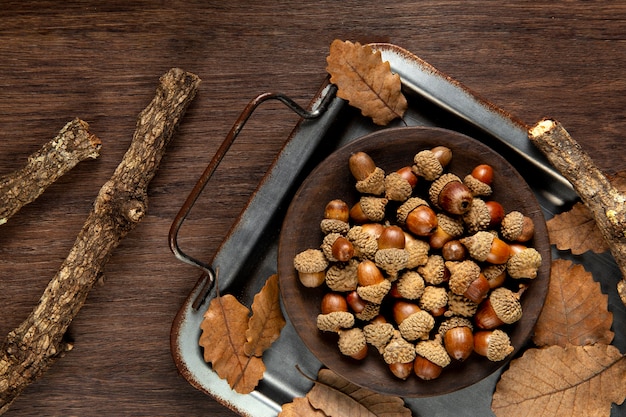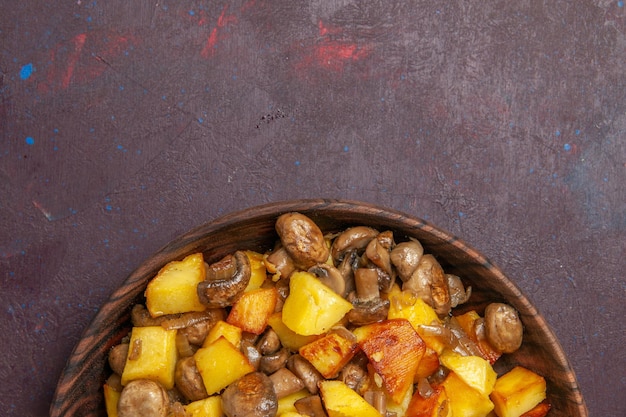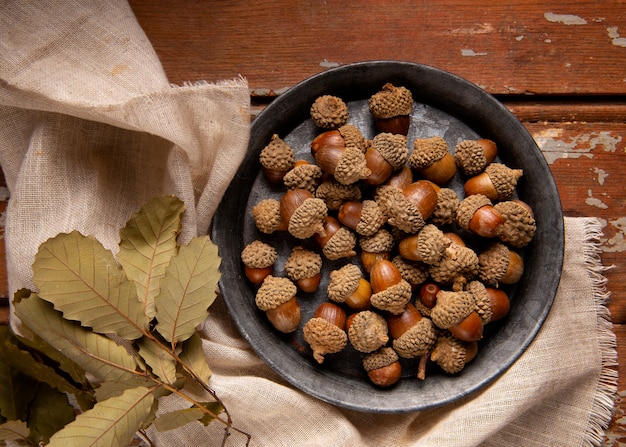Let's be honest, chestnuts are a true delight. Those shiny, brown nuggets of autumn are simply irresistible, especially when they're roasted to perfection. But, we all know how tricky roasting chestnuts can be, right? The stubborn shells, the occasional rogue chestnut exploding in the oven - it can be a bit of a faff!
Fear not, my fellow chestnut enthusiasts! This guide is your ultimate companion, covering everything from choosing the perfect chestnuts to getting those sweet, delicious kernels out of their tough jackets. We'll explore different roasting methods, tackle common challenges, and even dive into some of my favourite ways to enjoy roasted chestnuts – from festive desserts to warming winter soups.
Prepare to embrace the magic of roasted chestnuts, and who knows, you might even become a chestnut aficionado like me!
(Part 1) Choosing the Right Chestnuts

The Importance of Freshness
Freshness is key to getting those truly delicious roasted chestnuts. You want them to be firm, with a glossy, brown skin, free from any mould or damage. A gentle tap should produce a solid, resonant sound. If you see any soft, shrunken chestnuts or those with discoloured spots, steer clear – they're likely past their prime.
Different Types of Chestnuts
There's a world of chestnut varieties out there, each offering a unique flavour and texture.
European Chestnuts: These are the most common type, known for their sweet flavour and firm texture. They're perfect for roasting and are readily available in most markets.
American Chestnuts: These are less common than their European counterparts and have a milder flavour and slightly softer texture.
Chinese Chestnuts: Smaller and sweeter than European chestnuts, they boast a more delicate texture, making them a delightful treat.
Personally, I have a soft spot for European chestnuts. Their earthy flavour really shines through when roasted.
Storing Your Chestnuts
Once you've got your perfect chestnuts, it's important to store them properly. A cool, dry place is ideal – think a paper bag or a breathable container. Avoid the fridge, as it can actually dry them out.
(Part 2) Getting Ready to Roast

The Essential Tools
Before we start roasting, gather your essential tools:
A Sharp Knife: This is crucial for scoring the chestnuts, which helps them open up during roasting and prevents them from exploding.
A Baking Sheet: This will hold your chestnuts as they roast in the oven.
A Clean Tea Towel: This handy tool comes in after roasting to help loosen the skins.
Preparing the Chestnuts for Roasting
1. Score the Chestnuts: Use your sharp knife to score an "X" on the flat side of each chestnut. This allows steam to escape during roasting, preventing any unexpected explosions.
2. Soak in Water: Submerge the scored chestnuts in a bowl of cold water for about 30 minutes. This rehydrates them and makes the roasting process smoother, resulting in a more tender chestnut.
(Part 3) The Roasting Process

Oven-Roasting: The Classic Method
This is the traditional way to roast chestnuts, and it's a method I often rely on.
1. Preheat Your Oven: Set your oven to 200°C (400°F).
2. Spread Out the Chestnuts: Arrange the scored chestnuts in a single layer on a baking sheet. Don't overcrowd them, as this can lead to uneven roasting.
3. Roast Until Done: Roasting typically takes around 20-30 minutes, but keep a watchful eye. They're ready when their skins are brown and the flesh is tender. To check, gently pierce them with a fork – if it goes in easily, they're done!
Alternative Roasting Methods
While oven-roasting is a classic, there are other methods worth exploring:
Roasting in a Pan: Heat a heavy-bottomed pan over medium heat, add the chestnuts, and cover with a lid. Cook for 15-20 minutes, shaking the pan occasionally, until the chestnuts are tender.
Roasting in a slow cooker: Add the chestnuts to your slow cooker, cover with water, and cook on low for 4-6 hours. This is a great option if you're looking for a hands-off method.
The Importance of Patience
Patience is your best friend when roasting chestnuts. Rushing the process can lead to dry, tough chestnuts. Take your time, and you'll be rewarded with a delicious treat.
(Part 4) Removing the Skins
The Hot Towel Trick
This is my go-to method for tackling those stubborn chestnut skins.
1. Wrap in a Towel: Once the chestnuts are roasted, wrap them in a clean tea towel and let them sit for a few minutes. The steam will help loosen the skins, making them easier to peel.
2. Peel Away: Gently peel the skins away from the hot chestnuts. You might find some of the inner skin still attached, but you can easily remove this with your fingers.
Alternatives to the Hot Towel
If you're feeling adventurous, try these alternatives:
Peeling with Your Fingers: If you're patient and have strong fingers, you can try peeling the hot chestnuts with your hands. Just be careful not to burn yourself!
Using a Chestnut Peeler: Special chestnut peelers are available that can help you remove the skins quickly and easily.
(Part 5) Delicious Roasted chestnut recipes
Sweet Treats
chestnut puree: This simple yet delightful puree is perfect for spreading on toast or using as a base for desserts. Blend roasted chestnuts with a little butter and sugar until smooth.
chestnut cake: Indulge in this decadent cake, a festive favourite, boasting the rich flavour of roasted chestnuts.
Chestnut Cookies: These chewy cookies are bursting with the delicious flavour of roasted chestnuts, making them a delightful treat.
Chestnut Mousse: This light, airy mousse is surprisingly easy to make and perfect for a special occasion.
Savoury Delights
chestnut soup: This warming soup is ideal for a chilly evening. The sweetness of the chestnuts beautifully balances the earthy flavours.
chestnut stuffing: A delicious alternative to traditional bread stuffing, adding a unique flavour to your holiday feast.
Roasted Chestnut Salad: Elevate your salad with a touch of autumnal flavour by adding roasted chestnuts.
Chestnut Bruschetta: This simple yet elegant appetizer is a perfect way to showcase the delightful flavour of roasted chestnuts.
(Part 6) FAQs
Q1: What if my chestnuts explode in the oven?
This can happen if the chestnuts haven't been scored properly or if they're overcooked. Make sure to score them deeply and keep a close eye on them in the oven.
Q2: Can I roast chestnuts in the microwave?
Microwave ovens aren't the best option for roasting chestnuts, as they can dry them out and leave them with an uneven texture. Stick to the oven or slow cooker for the best results.
Q3: Can I freeze roasted chestnuts?
Yes, you can freeze roasted chestnuts for up to three months. Simply place them in an airtight container or freezer bag. To reheat, thaw them overnight in the fridge and then reheat in the oven at 180°C (350°F) for about 15 minutes.
Q4: How can I tell if a chestnut is bad?
Look for signs of mould, discoloration, or soft spots. If the chestnut has a strong, unpleasant smell, it's best to avoid it.
Q5: What other dishes can I make with roasted chestnuts?
The possibilities are truly endless! You can incorporate them into pasta sauces, risottos, quiches, and even desserts like ice cream and panna cotta.
(Part 7) My Personal Favourite Chestnut Recipe: Roasted Chestnut Soup
This is my go-to chestnut recipe. It's comforting, delicious, and the perfect way to warm up on a cold day. The sweetness of the roasted chestnuts perfectly balances the earthy flavours of the other ingredients.
Ingredients:
250g roasted chestnuts
1 tbsp butter
1 onion, chopped
2 cloves garlic, minced
1 tbsp olive oil
1 tsp dried thyme
750ml vegetable stock
Salt and pepper to taste
Method:
1. Peel the roasted chestnuts and set them aside.
2. Melt the butter in a large saucepan over medium heat. Add the onion and cook until softened, about 5 minutes.
3. Add the garlic and thyme and cook for 1 minute more.
4. Pour in the vegetable stock and bring to a boil.
5. Reduce heat and simmer for 10 minutes.
6. Add the roasted chestnuts to the soup and blend with an immersion blender until smooth.
7. Season with salt and pepper to taste.
Serving Suggestions:
Serve the soup hot with a dollop of crème fra??che or a drizzle of olive oil. You can also add a sprinkle of chopped parsley or chives for extra flavour.
(Part 8) Enjoying the Magic of Roasted Chestnuts
There's something truly magical about roasting chestnuts. The aroma that fills your kitchen is intoxicating, and the taste is simply heavenly. But it's more than just the taste - it's the experience. It's a reminder of autumn, of cozy nights by the fire, and of the simple pleasures in life.
So go ahead, give roasting chestnuts a try. You might just discover a new favourite autumnal treat. And trust me, once you've experienced the magic of roasted chestnuts, you'll never want to go back.
Everyone is watching

How to Cook Frozen Lobster Tails Perfectly: A Step-by-Step Guide
RecipesLobster. Just the word conjures up images of lavish meals, special occasions, and a taste of luxury. But let's...

Pigs in a Blanket Cooking Time: How Long to Bake for Perfect Results
RecipesAh, pigs in a blanket. Just the name conjures up images of those delightful little parcels of crispy pastry en...

Pork Fillet Cooking Time: How Long to Cook It Perfectly
RecipesPork fillet, or tenderloin as it's sometimes called, is a real favourite in our house. It's so versatile, and...

The Ultimate Guide to Tender, Juicy Pulled Pork
RecipesRight, let's talk pulled pork. It's one of those dishes that just screams "comfort food," doesn't it? I mean...

The Ultimate Guide to Cooking Sweet Potatoes: From Roasting to Mashing
RecipesSweet potatoes. Just the name conjures up images of warm, comforting dishes, bursts of vibrant color, and a to...
